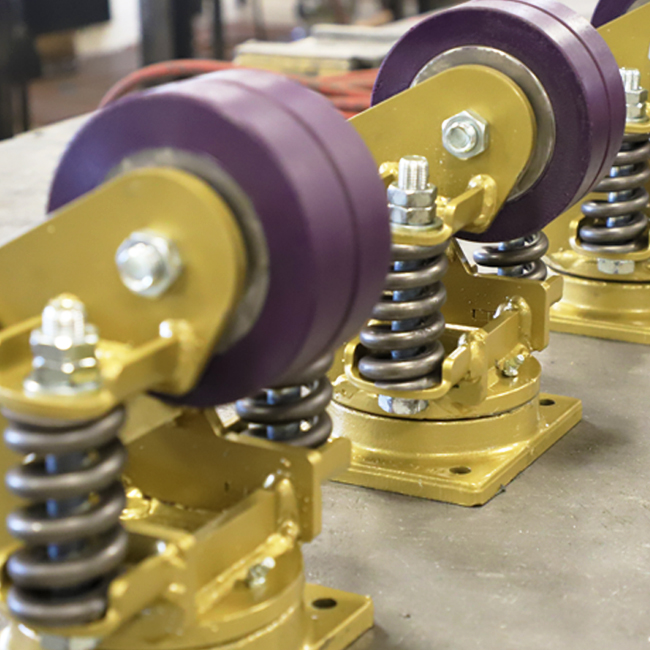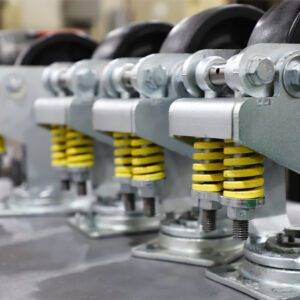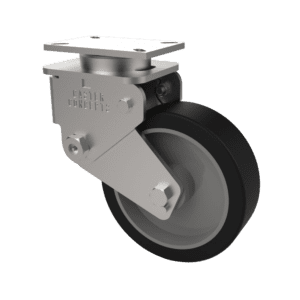

Knowing how Shock-absorbing casters work starts with understanding that they are spring-loaded. These springs deflect when pressure is applied to them. Let’s look at the two different ways they are used.
The most common use is to minimize the impact on a cart and its cargo. A spring cushions the effects of surface unevenness and impacts from the floor. To do this, the caster is designed to support a specific load, which is the caster rating listed in the catalog.
Applying this load to the caster will deflect approximately 50% of its travel. As the cart moves through its application, the caster can deflect up and down as the floor changes. This dampens the impact on the cargo being carried and helps keep wheels on the ground in cases where the floor is uneven.
The second way a spring loaded caster wheel works is to deflect so that the feet on a cart or work stand can touch the floor. The intent here is to have the caster roll freely with lighter loads. With heavier loads, the spring deflects to a hard stop, and the feet on the cart touch the floor and support the load. At that point, the casters no longer support the load.

73 Series Spring Loaded Casters
In this type of application, it is essential to understand how much the caster will deflect and under what loads. That way, we can ensure the caster will work with the cart’s design and compress accordingly. The cart’s feet can no longer move when it touches the floor. It will remain this way until the load is removed and the springs in the caster uncompress and lift the stand back off the ground.
If looking at a spring-loaded caster wheel, never choose one out of the catalog based on height and load alone. This could leave you with a caster that doesn’t perform as intended for the application.
Engineering should always be involved in these applications to correctly specify a caster that will do what the customer needs. This also ensures that the caster is sized accordingly so it doesn’t compress so far that it damages the springs.
To learn more about the many spring-loaded casters we offer, click here.
Ideally, the spring within the caster only travels about 80% of its total travel, so we do not cause the spring to be a compression set. It is critical that we know how much load is on the stand when unloaded and how much more load will be applied. We use this information to ensure the casters’ design will work properly in the application. What we don’t want to happen is the caster not compressing enough or compressing prematurely so the foot potential does not clear the floor when unloaded.
Applying less load than rated may cause minimal or no deflection, as the springs resist loads lighter than their design capacity. Overloading the caster leaves no spring travel to absorb impact, causing potential damage when the caster hits a bump.
We must also understand the intent and purpose of the safety factor on spring loaded casters. If we build the safety factor into the rated load, we potentially get a caster with no spring deflection because it is designed to support loads much heavier than it is seeing.
When a safety factor is needed, we design all caster components, except the spring, to meet the required safety factor.
The springs support the load, while a hard stop prevents exceeding their rated capacity. This ensures the caster works properly under load and helps prevent failure or damage when overloaded during operation.
We engineer caster systems to maximize your productivity and safety. Interested in learning more?
Need Immediate Assistance? Phone: 888-788-6916